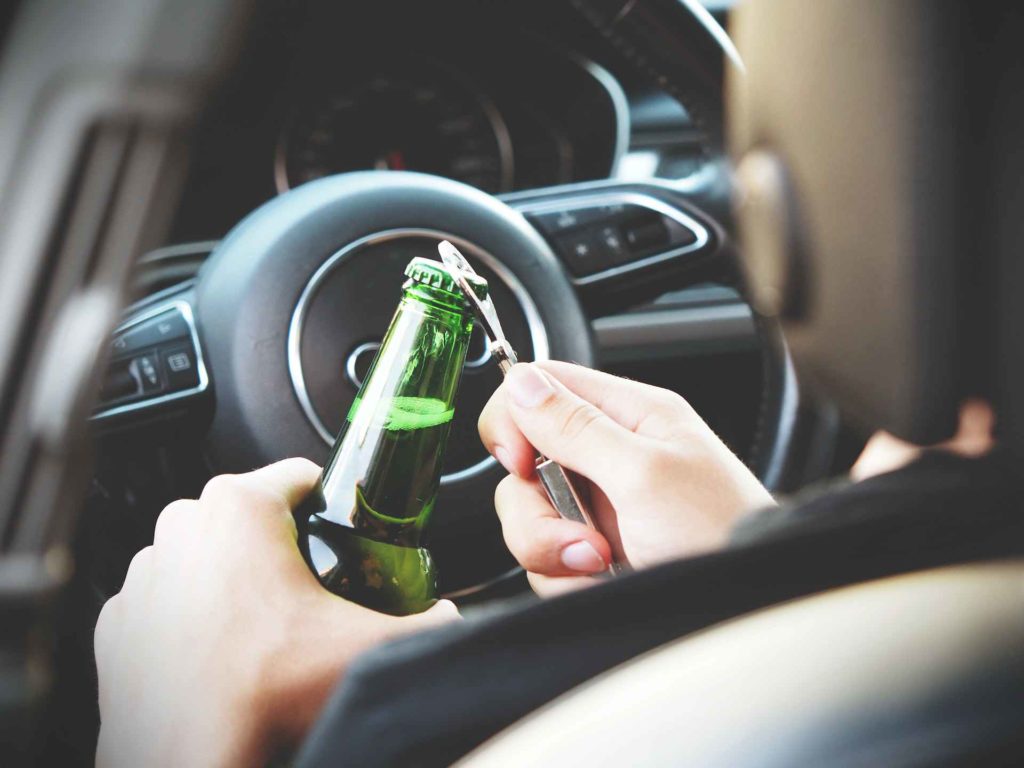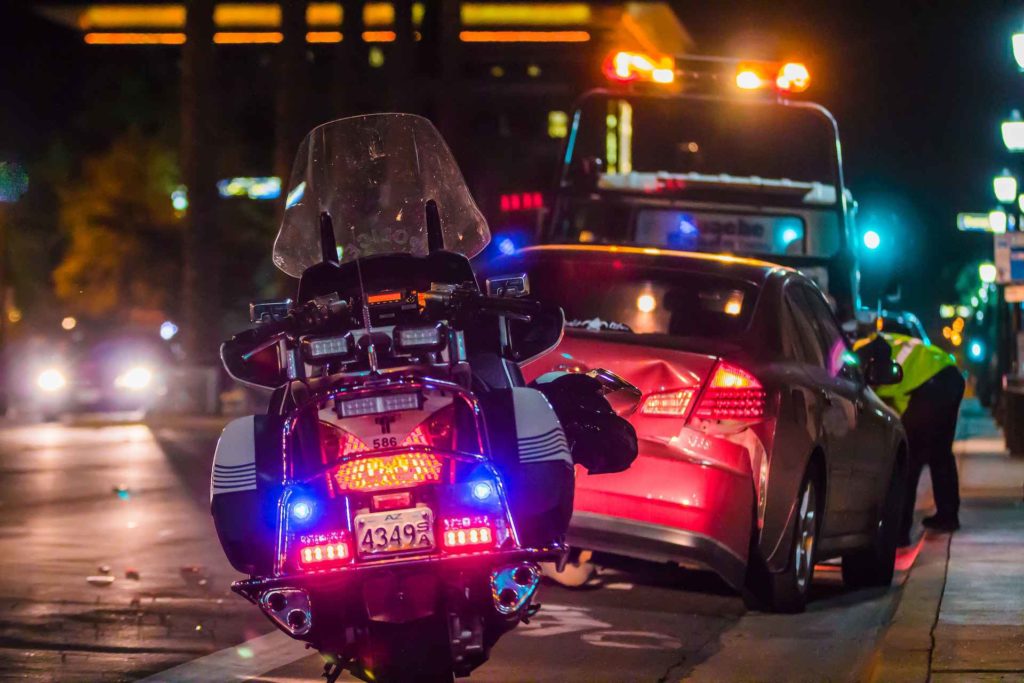A rear-end accident happens when a vehicle collides with the car in front. This type of accident can lead to a chain reaction involving three or more cars. Sometimes, it can cause serious injuries, fatalities, and property damage.
In 2020, there were 2,800 fatal crashes involving 3,000 deaths due to rear-end accidents. Rear-end collisions also resulted in more than 1.3 million injuries. Moreover, the
For instance, a triple rear-end collision occurred when a 66-year-old female drove a Honda Accord while allegedly under the influence. She rear-ended a Toyota Tundra, which hit an Audi Q5. Unfortunately, the Audi also crashed into a Ford F-150. The auto accident caused multiple open fractures and unconsciousness.
In Texas, a minivan rear-ended an SUV while trying to overtake another car in a no-passing zone. The car accident killed six and injured five people. The minivan’s driver and young passenger were among the fatalities.
Contact a car accident attorney immediately if you suffered personal injuries due to a rear-end collision. They can help you in securing damages and
Key Takeaways
|
Possible Liable Parties in a Rear-End Accident
The cause of a rear-end accident is essential in determining liability. In a rear-end collision, liability may lie with the rear driver, the lead driver, or a third party. The at-fault party typically pays damages, but other factors may also come into the equation.
Rear driver
Drivers must leave enough distance between their vehicle and the one in front. Many states have mandated this in transportation laws to prevent accidents due to tailgating. Drivers that cause a rear-end accident due to tailgating may be liable for any damages.
For example, Section 32-5A-89 of the Code of Alabama prohibits a driver from following another vehicle too closely. It stipulates a minimum of 20 feet distance between cars for every 10 miles per hour of speed. The driver must also consider the speed of other vehicles and road conditions.
Section 21-310 of the Maryland Code also restricts motor vehicle drivers from following another car too closely. However, it leaves the determination of a “reasonable and prudent” following distance to the driver.
The rear driver may also be liable if they operate the vehicle under the influence (DUI). The National Highway Traffic Safety Administration (NHTSA) recorded more than 11,600 deaths in 2020 due to impaired driving.
The effects of DUI include loss of judgment, lowered alertness, slowed thinking, and poor coordination. These instances can lead to a rear-end accident. For example, drivers who exhibit decreased alertness may fail to keep a safe distance or brake when necessary.
Another factor that may lead to liability is distracted driving. The NHTSA stated that distracted driving claimed the lives of more than 3,100 people in 2020. Driver inattention may include texting, talking to passengers, adjusting Global Positioning System (GPS) apps, and eating while driving. It causes the at-fault driver to lose awareness of present road and traffic conditions.
Failing to maintain their vehicle properly may constitute negligence as it increases the likelihood of a car accident. For instance, a vehicle can take longer to stop when it has worn brake pads. Moreover, a loose steering wheel can cause overturning, resulting in a collision.
Lead driver
The trailing driver is not always at fault because the lead driver may have acted carelessly. For example, failure to use turn signals before making a turn can increase the chances of road accidents. The driver may also shift into reverse unexpectedly. In these scenarios, other drivers do not know the intentions of the lead vehicle.
Moreover, drivers have a responsibility to maintain their vehicles in good condition. The law does not exempt the lead driver from following this rule. Hence, faulty brake lights can make a driver liable for a car accident.
It would help to inspect your vehicle regularly. Back up close to a lightly painted wall, then hit the brakes. If your brake lights are working, you should see a red glow on the wall. You can also ask someone to check your lights.
Third-party
Third parties can also be liable in a rear-end crash. Pedestrians who unexpectedly cross the road and bystanders blocking the road can surprise the lead and rear drivers. Drivers who run a red light may force the lead driver to brake suddenly, causing the rear driver to crash into them.
Manufacturers of defective vehicles that contribute to rear-end collisions may also be liable. For instance, General Motors recalled millions of trucks and SUVs with faulty brakes in 2019 and 2020. It was due to an NHTSA investigation after receiving complaints for 113 accidents and 13 injuries attributed to these vehicles.
Another incident involved a product made for off-road motorcycles. In 2007, Magura USA recalled its radial brake master cylinders due to a risk of brake failure. The Consumer Product Safety Commission (CPSC) directed consumers to stop using the product and sellers to stop offering it to the public.
Hazardous road conditions, including potholes, rough roads, and protruding steel bars, can also lead to accidents. Cities, states, and government agencies are responsible for repairing and maintaining roadways, so they may be liable for rear-end crashes. Pennsylvania acknowledges this responsibility by allowing claims against the state government for property damage due to potholes.
A car accident lawyer must prove negligence to attribute liability to any party. That applies to the rear driver, lead driver, pedestrians, auto manufacturers, cities, and states.
Concept of Negligence in a Car Accident
Negligence refers to a behavior that falls below the required standard of care. Its elements are:
- Defendant’s legal duty
- Breach of the said duty
- Plaintiff’s injury
- The breach caused the injury
Your car accident lawyer must prove these elements to determine liability. A sample scenario involves two drivers: X and Y. Driver X has a legal duty to observe traffic regulations, including keeping a safe distance between their car and Driver Y’s vehicle. However, Driver X tailgated, breaching the legal obligation to maintain a safe distance.
Driver X rear-ended Driver Y’s vehicle, resulting in severe injuries needing medical attention. An investigation revealed that X was liable because the act of tailgating resulted in an accident that directly caused the injuries.
However, proving negligence In real-life accident lawsuits is not easy. It requires experience and legal expertise due to the complexity of the process. Personal injury lawyers can collect evidence, analyze circumstances, and apply legal principles to win your case.
Comparative Negligence and Contributory Negligence


The negligence example is relatively simple because there is only one negligent actor. When two or more parties are at fault, a personal injury claim becomes subject to one of three negligent doctrines. The doctrine adopted by a state will determine if a claimant has recourse to the law based on the circumstances.
Pure comparative negligence
The pure comparative negligence doctrine reduces the amount of damages a plaintiff can recover according to their degree of negligence. This doctrine allows plaintiffs to recover compensation even if they are 99 percent at fault. Hence, they can receive damages for the other driver’s one percent negligence.
For example, drivers A and B get into an accident, and Driver A sustains serious injuries. Driver A sues Driver B for compensatory damages. The court awards Driver A $100,000 to cover medical bills and other expenses.
However, the court assigns 75 percent of the fault to Driver A and 25 percent to Driver B. In that case, Driver A will receive $25,000 from the other party.
More than 10 states follow this doctrine, including the following:
- California
- Florida
- New York
- Alaska
Modified comparative negligence
On the other hand, the modified comparative negligence doctrine is not so generous with plaintiffs. It requires the plaintiff to be 50 percent or 51 percent or less at fault for an accident to receive compensation. If they go over that threshold, they will not be successful in their claim.
The threshold or “bar” for recovering damages depends on the state. Some subscribe to the 50 percent bar rule, while others follow the 51 percent bar rule. The table below shows three states with 50 and 51 percent bar rules.
Either bar rule still follows the comparative negligence theory. When the claimant wins the case, the court reduces the amount of recovery in proportion to the degree of fault.
Contributory negligence
Some states follow the contributory negligence rule, where a claimant cannot recover damages if they are at fault to any degree. For example, suppose the rear driver was tailgating, and the lead driver had defective brake light, leading to a rear-end collision. In that case, neither one can sue for compensation for injuries or property damage.
It does not matter if either driver was only one percent negligent. To receive compensation for their injuries, the plaintiffs in these states must prove they are not at fault. That can be challenging without the help of an experienced personal injury lawyer.
Only the following four states and one district subscribe to this rule:
- Alabama
- Maryland
- North Carolina
- Virginia
- District of Columbia
Due to the challenges that car accident victims in these states may face, courts allow exceptions. One of these is the last clear chance doctrine. This principle enables plaintiffs to recover damages by proving the defendants had the ultimate opportunity to prevent the rear-end collision.
Rear-End Collision Insurance Claim
Most people involved in car accidents look to their
No-fault states
No-fault states require drivers to initiate a claim with their respective
Most no-fault states require drivers to get personal injury protection (PIP) to cover medical bills, lost wages, and funeral costs. The following are no-fault states:
- Florida
- Kansas
- Hawaii
- Michigan
- Kentucky
- Massachusetts
- Minnesota
- North Dakota
- New Jersey
- New York
- Pennsylvania
- Utah
Since
At-fault states
At-fault states require the liable driver to pay damages to the affected parties, typically through their
Suppose the claimant disagrees with the amount determined by the
Some of the at-fault states include the following:
- Alabama
- Alaska
- Arizona
- Colorado
- Illinois
- South Carolina
- Washington
The Aftermath of a Rear-End Collision
Whatever state you are in and what rules apply for compensation, a serious rear-end collision can change your life. The aftermath of a rear-end accident can include common injuries, emotional trauma, mental issues, property damage, and death.
Injuries
Rear-end accidents can cause minor and major injuries. These include whiplash, sprains and strains, herniated discs, traumatic brain injuries (TBIs), and spinal cord damage.
Whiplash causes neck pain due to the sudden back-and-forth movement in a rear-end collision. Victims of vehicle accidents may also experience decreased range of motion due to sprains.
Those involved in a rear-end crash also can suffer from soft tissue injuries, such as herniated discs. Its symptoms include back pain, numbness, tingling sensation, and muscle weakness.
While these conditions are no picnic, victims can also experience severe injuries, such as TBIs and spinal cord damage. A TBI can occur due to a violent blow to the head. It can cause headaches, anxiety, blurred vision, and loss of consciousness.
On the other hand, spinal cord injuries involve a complete or partial loss of sensory and motor functions. The signs include loss of bowel control, intense pain, numbness, twisted neck, and impaired breathing. Most patients need physical therapy and surgery to recover.
Fatalities
Aside from car accident injuries, rear-end collisions can also result in wrongful death. ABC4 News reported a rear-end crash that killed two people. According to the Charleston Police Department, a box truck rear-ended a motorcycle. Both the motorcycle rider and their passenger died at the scene.
The Tulsa police also reported a rear-end accident that killed a pickup driver. Witnesses said that the pickup hit the Waste Management truck at full speed. Although the pickup driver was taken to the hospital, he died from his injuries.
Property damage
Vehicular accidents can also cause property damage, especially when the cars hit a residential or commercial building. Aside from apparent damage to your vehicle, it may also develop hidden problems. For example, the transmission fluid may leak due to the impact. As a result, you might hear unusual noises and experience poor engine acceleration.
Moreover, your car’s wheels may become misaligned, resulting in strange vibrations whenever you drive. A rear-end crash can also affect the electrical systems which control your car’s cameras, sensors, and lights.
Recoverable Damages in a Rear-End Accident


The recoverable damages in a rear-end collision may include medical bills, repair costs, loss of income, funeral expenses, and pain and suffering.
Medical bills may refer to doctor’s fees, ambulance rides, hospitalization costs, surgery costs, and prescription medications. For example, an accident victim who suffered from neck injuries can recover expenses for physical therapy. Moreover, victims who could not work may seek payment for loss of income.
The immediate family of someone who dies in a rear-end collision can receive payment for funeral expenses. It includes fees for cremation, casket, and memorial service.Lastly, victims of a negligent rear-end crash may receive compensation for pain and suffering. This refers to the emotional distress and trauma they experience due to the incident. It may involve loss of enjoyment of life due to victims’ inability to participate in their usual daily activities.
Did you know?
The average cost of full car insurance coverage in the US is $1,601, and the minimum coverage is $513. Florida drivers pay the most expensive car insurance, while Vermonters pay the least for full coverage.
Hire a Personal Injury Lawyer for Your Rear-End Collision Claim
Liability in a car crash may lie with the rear driver, lead driver, and third parties. In a rear-end collision lawsuit, you may receive compensation for medical bills, repair costs, loss of income, and burial expenses. Moreover, you can seek payment for pain and suffering.
Visit The Personal Injury Center to know your rights and connect with experienced personal injury attorneys. A car accident lawyer can help you prove negligence and, more importantly, make a solid case for recoverable damages. They can also do any negotiating necessary to get the compensation you deserve without filing a lawsuit.
Did you suffer injuries due to a rear-end collision? Book a free consultation today! The Personal Injury Center can help protect your rights after a negligent accident.
FAQs on Rear-End Collisions
What are other types of car accidents?
Aside from rear-end crashes, car accident types include head-on collisions, side-impact accidents, chain reactions, and rollovers.
Where do rear-end collisions usually happen?
Rear-end crashes usually occur at stoplights, stop signs, and on roads with heavy traffic.
How much is the settlement for rear-end accidents?
The car accident settlement you can receive depends on the facts of the incident. There is no definite compensation because each collision has varying circumstances.



